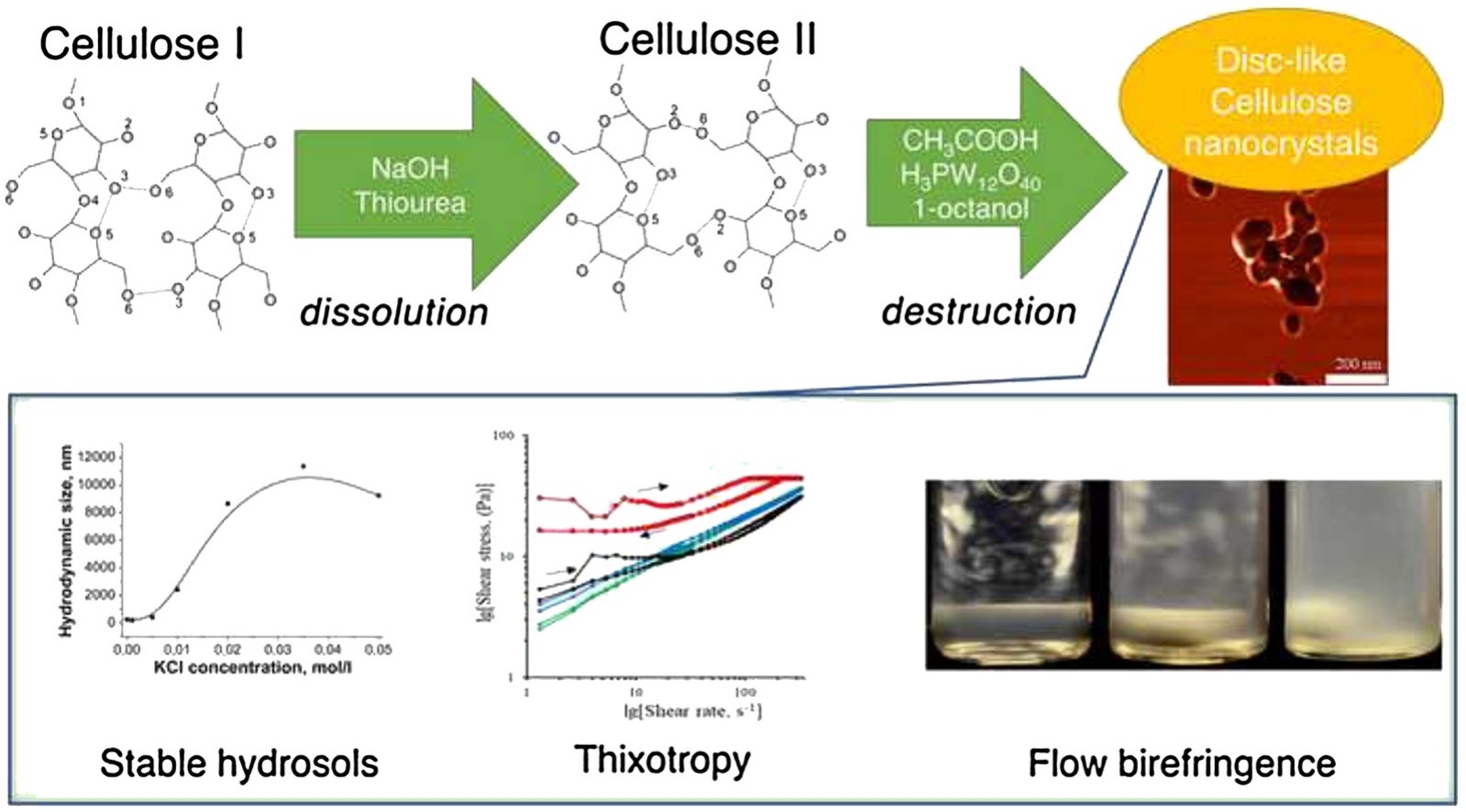Authors: Torlopov M.A., Martakov I.S., Mikhaylov V.I., Krivoshapkin P.V., Tsvetkov N.V., Sitnikov P.А., Udoratina E.V.

Abstract
One possible way of obtaining cellulose nanocrystals and aqueous sols with novel properties is based on modification of supramolecular structure of the polysaccharide. This modification involves rearrangements of hydrogen bonds and has an effect on polymer morphology, formation of surface reactive sites and interface interactions. Disc-like nanocrystals of cellulose II were prepared by solvolysis of regenerated cellulose in acetic acid/octanol medium in the presence of 0.4 mol% of phosphotungstic acid. The starting cellulose samples were dissolved and regenerated in the NaOH/thiourea system. Cellulose nanocrystals were studied by transmission electron microscopy, atomic force microscopy, dynamic light scattering, FTIR spectroscopy, XRD and thermogravimetric analysis. Colloidal stability of aqueous suspensions of cellulose nanocrystals in the presence of electrolyte (KCl) was studied. Their acid-base properties were revealed using potentiometric titration. The influence of electrolyte concentration on dynamic viscosity of the obtained hydrosols and their ability to show birefringence was established.
DOI: https://doi.org/10.1016/j.carbpol.2018.08.002
Read Full:
https://www.sciencedirect.com/science/article/pii/S0144861718308907